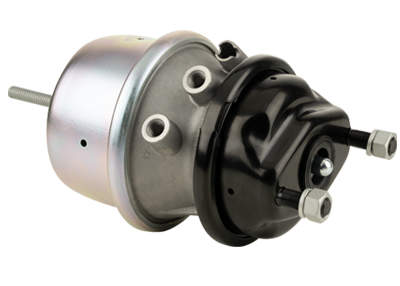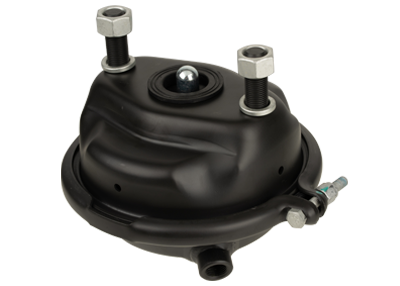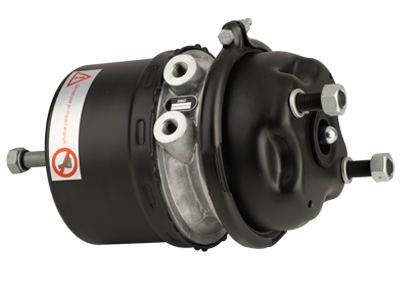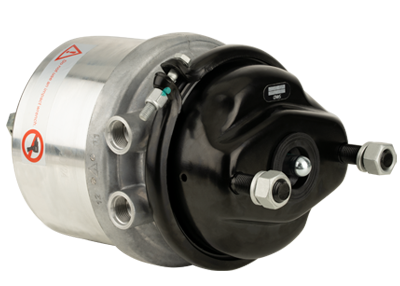
The most common foundation brake found on modern heavy trucks is the wedge brake. The primary advantage of this system is that it doesn't require the frequent manual adjustment required by cam brakes.
Wedge brakes operate on the principle of leverage to multiply the air pressure applied by the driver. The air pressure from the brake pedal acts on a slack adjuster, which turns a power screw that clamps the brake shoes or cam against the inside of the drum. Depending on the direction of the camshaft rotation, this action forces the brake shoe lining against the drum, slowing and stopping the vehicle.
A wedge brake chamber push rod directs a wedge between the ends of two brake shoes, pulling them apart and against the inner brake drum surface to produce a stopping force. The amount of air that must be supplied to the brakes to produce this force depends on the brake drum diameter, the size of the slack adjuster and the maximum stroke available for the wedge brake chamber. Typically, each brake on an axle should have the same amount of air brake chamber pushrod travel, or the brakes will not perform as well as they could.
Because of this, it is important to use a tool designed to measure air brake chamber pushrod travel when adjusting the slack adjuster. This can be done from the cab, but it is best to have eye protection when doing so. It is also important to make sure the slack adjuster arm and the push rod are not moving away from each other as you turn the slack adjuster adjusting bolt. This indicates that the slack adjuster is being turned in the wrong direction, and if this occurs during brake operation, it can result in brake failure.







 英语
英语 中文简体
中文简体 德语
德语 俄语
俄语 西班牙语
西班牙语 法语
法语
